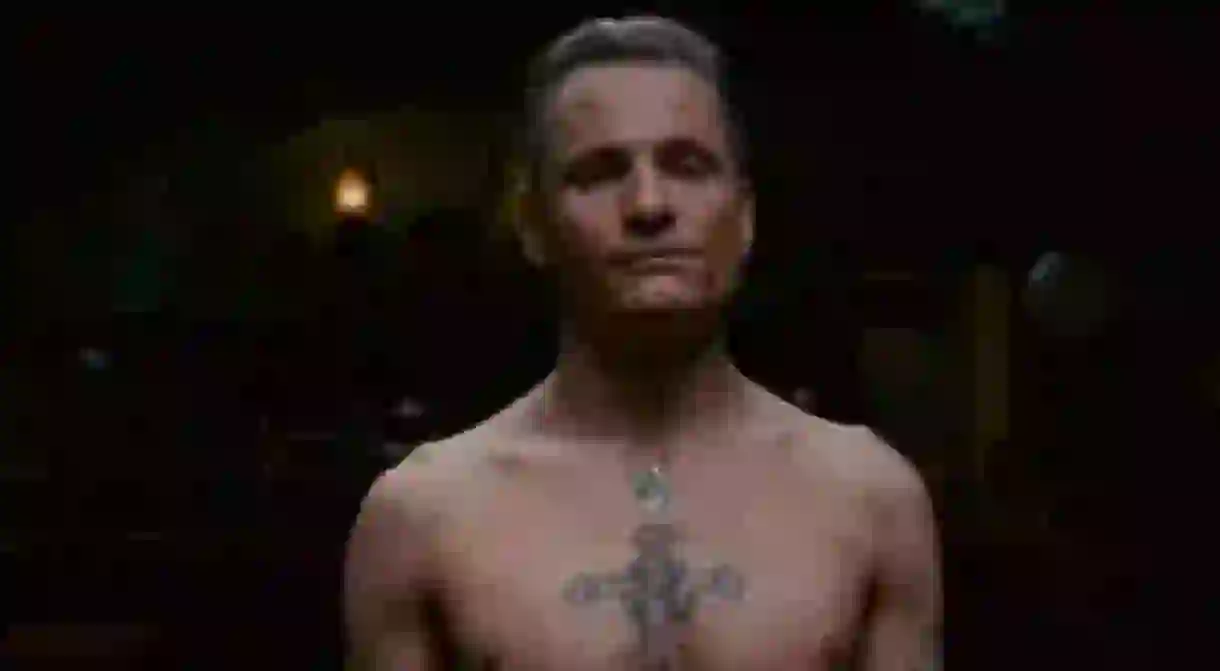Master of Gore: Exploring the Cinematic Canon of David Cronenberg

David Cronenberg has made a career of challenging audiences and critics, from the exploding heads of Scanners to the controversial auto-fetishists of Crash. The body horror maestro is one of Canada’s most important film exports specialising in tales of bodies in revolt, fleshy genetic mutations, perverse sexuality and fractured psychological states.
It is often forgotten that Cronenberg started out making the kind of grungy low budget sociological horrors that are still far removed from his current status as respectable art house auteur. The Brood (1979) is the most successful of his early run of brilliant cautionary body horrors, which also includes the venereal horrors of Shivers (1975) and Rabid (1977). A gooey and gruesome paedophobic horror in the tradition of Village of the Damned (1960) or The Omen (1976), The Brood is one of the most imaginative and cerebral horror films of the 1970s, drawing on Cronenberg’s anxieties about his recent divorce with his ability to visualise bodily metaphors on full display. Oliver Reed stars a doctor of psychoplasmic therapy, a new experimental treatment which causes one of his recently divorced female patients to manifest her rage and depression as a physical symptom and give birth to the titular brood of mutant dwarf children.
Continuing his exploration of the mind, Cronenberg’s first commercial success was the science fiction thriller Scanners (1981) about a near-future war between underground communities of telekinetic super beings which is famous for the shot of an exploding cranium in the opening scene. His 1986 remake of the science fiction classic The Fly is Cronenberg’s first bona fide masterpiece and probably his most perfect realisation of one of his key thematic themes of the body being invaded by a foreign element. Since the film was released in the midst of the AIDs crisis it can be seen as an allegory of the disease even though Cronenberg has denied that this was his intention. However, the quintessential Cronenbergian film of the 1980s is Videodrome (1983), a too-ahead-of-its-time nightmare vision of state sponsored media control, government surveillance, reality television and pornography that is as prescient today as when it was released. TV executive James Woods becomes addicted to a violent snuff television channel, uncovering a global conspiracy in the process. A film of shocking violence and disturbing hallucinations, the film contains some of the most indelible and unforgettable images of Cronenberg’s whole filmography, from Woods reaching into a vaginal opening in his stomach to later being enveloped by Debbie Harry’s giant lips emanating from his television.
Cronenberg followed the critical success of The Fly and Videodrome with The Dead Zone (1983) which remains one of Cronenberg’s least appreciated films. An adaptation of the 1979 Stephen King novel about a man (Christopher Walken) who awakens from a five year coma to discover he has psychic powers, the films find the director at his most restrained and visually composed and showed that he was capable of more than Grand Guignol gore. The late 80s and early 90s proved to be a creatively rich period for Cronenberg who continued to produce some of his most brilliant and controversial work. The surgical horror drama Dead Ringers (1988) features an astonishing performance by Jeremy Irons in the role of twin gynaecologist and in the bewildering surrealist detective noir Naked Lunch (1991), Cronenberg adapted a notoriously difficult and unfilmable cult novel by William Burroughs into an equally oblique and challenging film. His follow up, the romantic period drama M Butterfly (1993) was generally regarded as a misstep by many critics but in a career of challenging and idea laden cinema, but his next film Crash (1996) would prove to be the most controversial of his career. Nominated for the Golden Palm at the Cannes Film Festival, the film’s taboo subject matter of a group of paraphiliacs who are sexually aroused by car crashes, proved too challenging for some and the screenings of the film were banned in the borough of Westminster. The J.G. Ballard adaption is the perfect union of director and source material, with Cronenberg’s detached gaze capturing Ballard’s clinically icy prose. The enjoyably twisty alternative reality thriller eXistenZ was more palatable to audiences in 1997 but contained enough Cronenbergian weirdness and invention to satisfy fans of his earlier work.
The noughties saw Cronenberg reach a new level of maturity and critical appreciation. The period mystery piece and psychological drama Spider (2002) was composed, visually muted and shorn of his earlier body horror trappings but the film is still preoccupied with Cronenbergian themes of fractured mental states and crippled bodies. Ralph Fiennes gives a subtly nuanced performance as a man dealing with mental health issues who returns home to face traumas in his past. His next two features were his most mainstream films to date, the moody graphic novel adaptation A History of Violence (2005) and his even more surprising follow up Eastern Promises (2007), a violent London-based thriller about sex trafficking and the Russian mafia which featured a bravura and bloody brawl sequence in a Turkish bath. Reuniting with Viggo Mortensen for a third time, the historical drama A Dangerous Method (2011) examined the birth of psychoanalysis and the fractious friendship between Sigmund Freud and Carl Jung. His latest film sees Cronenberg adapting another seemingly unfilmable novel. Cosmopolis (2012) is an interesting but flawed adaptation of Don DeLillo’s short novella about imminent economic collapse. Played against type with dead eyed intensity by the teen idol Robert Pattinson, the action mostly takes place in a limo as young millionaire Eric Packer makes his seemingly innocuous journey to get a haircut with the threat of an assassination and society teetering on the brink of collapse.













